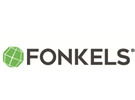"The COVID-19 pandemic has caused much misery. But, it's also created an ever-increasing awareness. Awareness of not only the environment, consumption, and CO2 emissions. But also of one's own carbon footprint," says Wim Apeldoorn, General Manager at Fonkels, a Dutch packaging company. "Everyone has become very aware that we all affect our environment. Not only consumers but the business world too. You see this more and more in packaging. From the cheapest plastic to 100% recycled cardboard; with slogans like 'planet proof' or 'biodegradable'."

How can a company see whether packaging is truly sustainable?
“Packaging's carbon footprint is largely determined by the raw material used. Virgin base materials have a higher CO2 value than recycled materials. Our packaging development always starts with the client's requirements and processes. If possible, we prefer to use recycled cardboard as the base material, with no plastic additives, of course. That's because we're also considering the chain's next step - waste recycling. Waste processors differ greatly in how they collect and process waste. But they all prefer receiving clean 'mono' materials."
"So, clean cardboard can form the base of new packaging. Cardboard coffee cups with a PE or PLA coating or carrot trays with PE coating are theoretically recyclable or compostable. However, in practice, this rarely happens. It's very costly to separate the plastic from the cardboard. That makes it financially unattractive," continues Wim.
"You can often compost paper, but many 'bio' plastics aren't practically compostable. Cardboard is a porous material, which is why you sometimes have to seal it. Here too, we start with the mono-material idea, like with our Pop-Up Cup, for example. This is a cardboard drinking cup with a thin plastic layer. You can easily peel the plastic from the cardboard, recreating two mono materials."
Composting versus recycling
There are many different opinions on whether it is best to compost or recycle waste. In 2019, 72% of all the paper and cardboard in Europe was recycled. "Cardboard can be recycled an average of eight times until its fibers get too short. It then ends up as something like an egg carton. Recycled cardboard is, therefore, an excellent raw material for packaging," explains Apeldoorn.
"Compostable waste is divided into industrial and home compostable materials. When a material is compostable, that means at least 90% of it can decompose within six weeks. That's in an industrial composting plant. It then meets the EN 13432 standard for compostable materials. And may therefore be called compostable."
"As mentioned, waste processors' collection and processing methods differ vastly. So much so that the material could be broken down, but often isn't. The alternative is to burn high-calorie materials. Our approach is always to recycle. That's not an end but a new beginning. So, we try to also realize the lowest long-term CO2 emissions with our packaging," concludes Wim.
 For more information:
For more information:
Wim Apeldoorn
Fonkels
22 Nijverheid Street
6681 LN, Bemmel, NL
Tel: +31 (0) 267 470 008
Email: wim@fonkels.com
Website: www.fonkels.com
